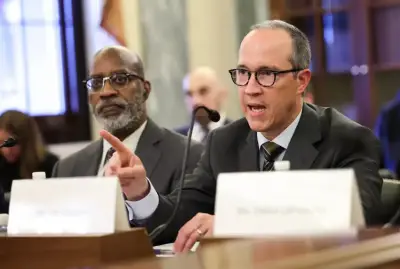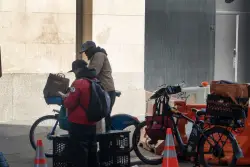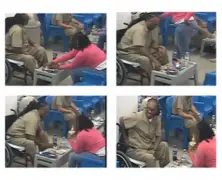Opinion: A Housing Blueprint for New York

“My comprehensive housing initiative—called the ‘Blueprint for New York’—proposes the addition of over 50,000 units annually, with a groundbreaking approach to affordability: setting rents at 25 percent of each borough’s median income.” Jim Walden, an attorney and former federal prosecutor, who is running for mayor in November. (Courtesy Jim Walden’s campaign) Editor’s Note: City Limits has offered similar op-ed space to the other candidates running for NYC mayor this year to share their housing plans. If you’re a candidate interested in submitting a piece, email [email protected]. Read Zohran Mamdani’s housing op-ed here. Every day, New Yorkers face the difficult choice between paying rent and meeting their other basic needs. The city’s housing crisis is not just a policy failure; it’s a moral one. Our housing system has left too many behind, with sky-high rents, options that are not truly affordable, an aged and deteriorating housing stock, and public housing in disrepair. This crisis is not insurmountable. With bold leadership and innovative solutions, we can rebuild New York’s promise for all who call it home. My comprehensive housing initiative—called the “Blueprint for New York”—proposes the addition of over 50,000 units annually, with a groundbreaking approach to affordability: setting rents at 25 percent of each borough’s median income. Too often, “affordable housing” is affordable in name only. Rents are pegged to the Area Median Income (AMI), a metric skewed by the city’s wealthiest zip codes (as well as parts of Westchester, Putnam and Rockland counties), leaving many New Yorkers priced out. One report aptly concluded that the current AMI calculation was “wildly divergent from actual income levels in New York City.” We will replace this broken model with a revolutionary approach: rent set at 25 percent of each borough’s median income. At the core of any meaningful housing solution must be a commitment to revitalizing NYCHA, our city’s public housing lifeline. My plan centers on increasing NYCHA’s quality of life through a pilot program that builds out to the street, transforming underused lawns and parking lots into new, modern homes.The added benefit is transforming segregated and capital-starved communities into economically integrated ones, but with supports to guard against gentrification. By adopting a “build-first” approach, current residents will move into new buildings before older ones are demolished so that no one is displaced. The plan also offers a path toward economic independence, a program for ownership and a key to unlock the door to generational wealth. My initiative tackles New York City’s housing shortage through a variety of other strategies, including a re-evaluation of laws like 485-x to restore effective developer incentives that spur both construction and job creation. It also proposes repurposing underused assets among the city’s 15,000 properties to make them available for new residential development. To convert vacant commercial buildings into homes, the plan would adjust zoning codes and relax certain design requirements. making these transformations faster and more cost-effective.More than 1,000 acres of abandoned lots—including sites in need of environmental remediation—would be rehabilitated and put to productive use as affordable housing. We will auction unnecessary properties, pre-approve building designs to speed construction, and allow flexible design rules for affordable units—maximizing every square foot for the benefit of New Yorkers. We will also acquire and auction vacant commercial spaces and “zombie” buildings, which are a blight on our neighborhoods and a wasted opportunity.In short, we will use all available tools and leave no stone unturned. But we will not force large developments in communities that do not want or need them, giving local communities more control over development. We will empower local boards to approve targeted upzoning so that housing meets the needs and character of each neighborhood.To cut through bureaucratic red tape, my plan creates a single, dedicated agency—partnering with the Real Estate Board of New York—to shepherd projects from approval to ribbon-cutting, with a goal of six months for small developments and 10 months for larger ones. While doing all this, we will also innovate to make our existing system better for landlords and tenants. To better protect tenants, we will create a new licensing system that holds bad landlords accountable, and, in extreme circumstances, will take away their right to be landlords at all. For landlords, we will create a better system to extract abusive tenants through private arbitration—streamlining the process and reducing the backlog that plagues our housing courts. This means faster resolutions and real consequences for bad actors. Finally, with all these benefits realized, developers will certainly make considerable profits. But, there is one more important innovation: after projects are completed, we will impose a value-added tax (VAT) on profits. Why? Because my plan aims to give disadvantaged kids a head start in life—paid for by developers.The VAT will fund a “Kids in Poverty” program, which I devised based on an idea from Bill Ackman. For the roughly 29,000 kids born into poverty, the KIP will assign a numerical account to each newborn, where the money will grow during their pre-adult lives. As long as these kids attend school regularly, it will provide at least $100,000 to each at adulthood, which would be ample for funding college, putting a downpayment on a home, or simply having a nest egg. In this way, we can use our housing solutions to help erase poverty. Unlike other proposals, the Blueprint for New York is supported by a comprehensive 100-page blueprint, which identifies funding sources for its components. By speeding the development, we will add more than 50,000 truly affordable units annually. In the earliest years of the program, there will be set-asides for seniors, public servants and young professionals.These set-asides reflect a necessary commitment to our senior and public servants (and will help with recruiting more police, firefighters and corrections officers) but will also help our business community attract the best and brightest young workers, on which our economy and prosperity depends. While detailed and ambitious, this plan is specific and achievable. It is a plan that puts people ahead of politics and delivers real results, not more excuses. Jim Walden is an attorney and former federal prosecutor who is running as an independent in the November general election for New York City mayor. The post Opinion: A Housing Blueprint for New York appeared first on City Limits.


